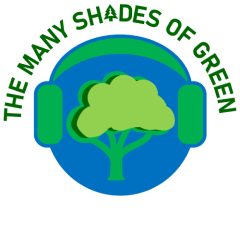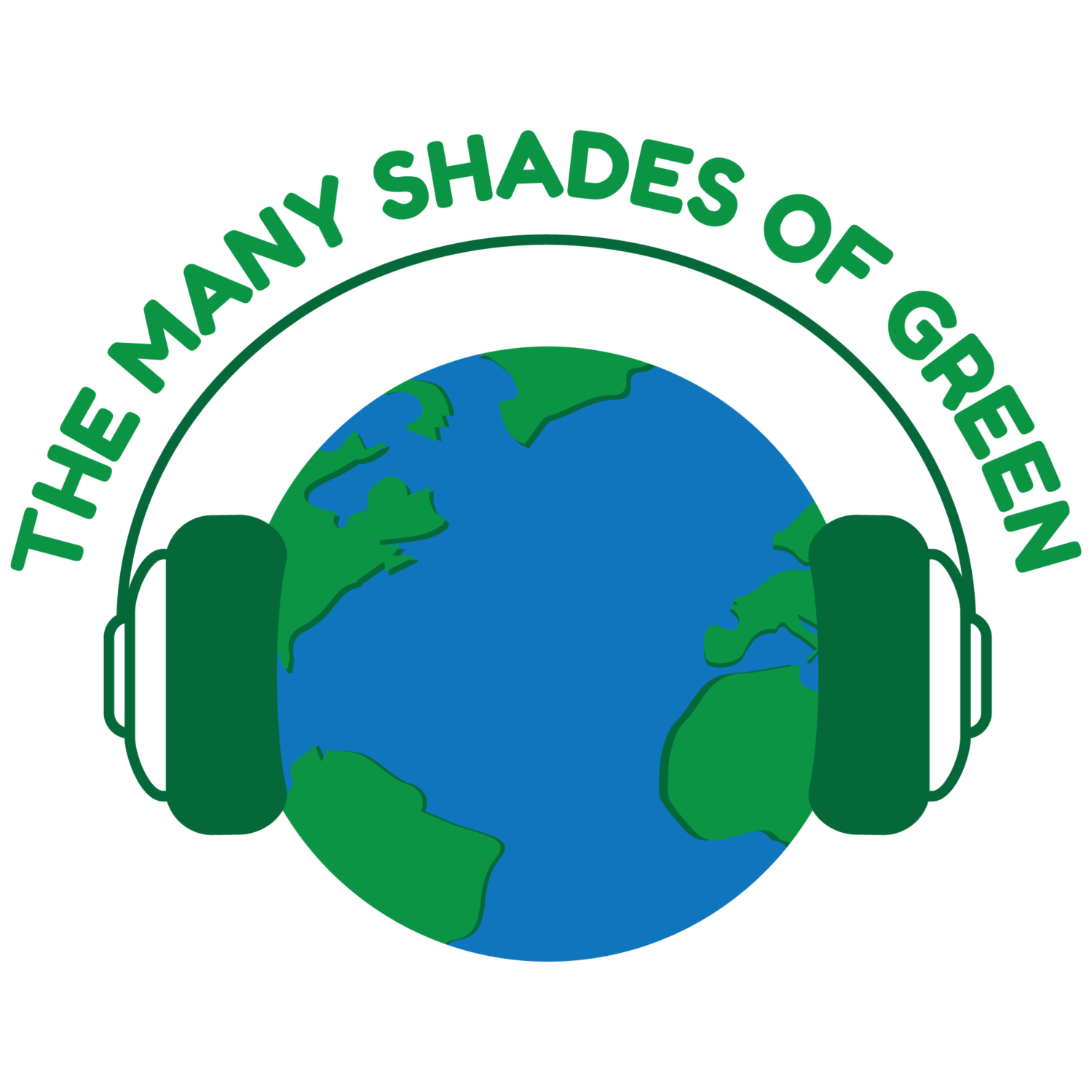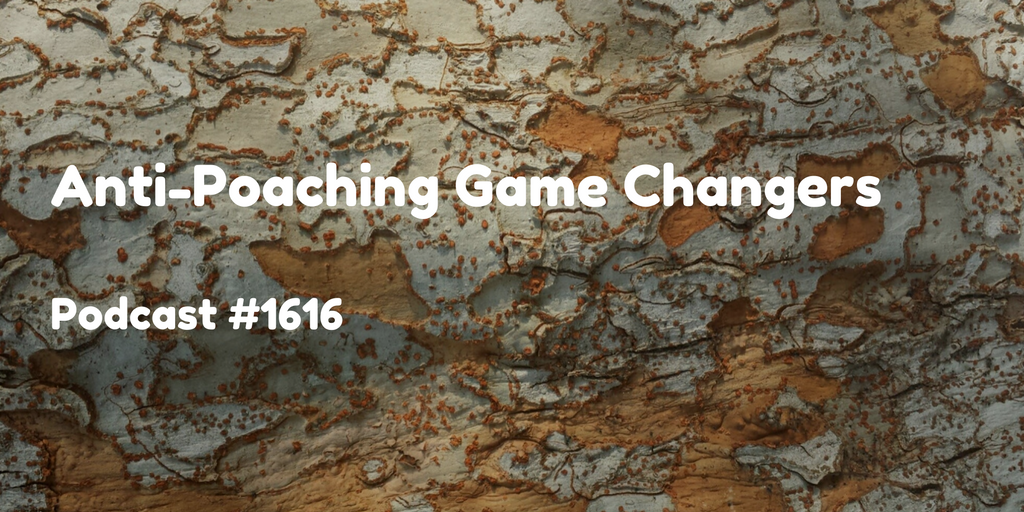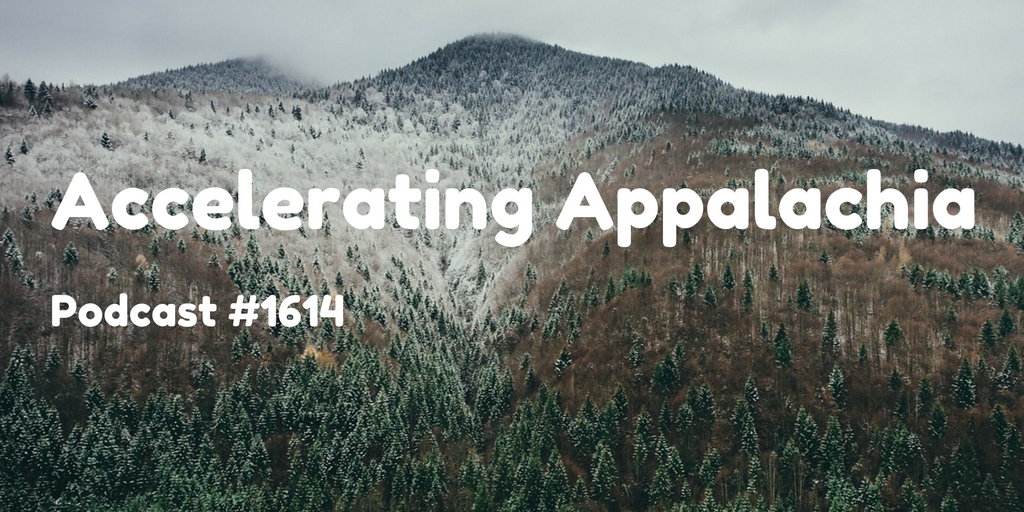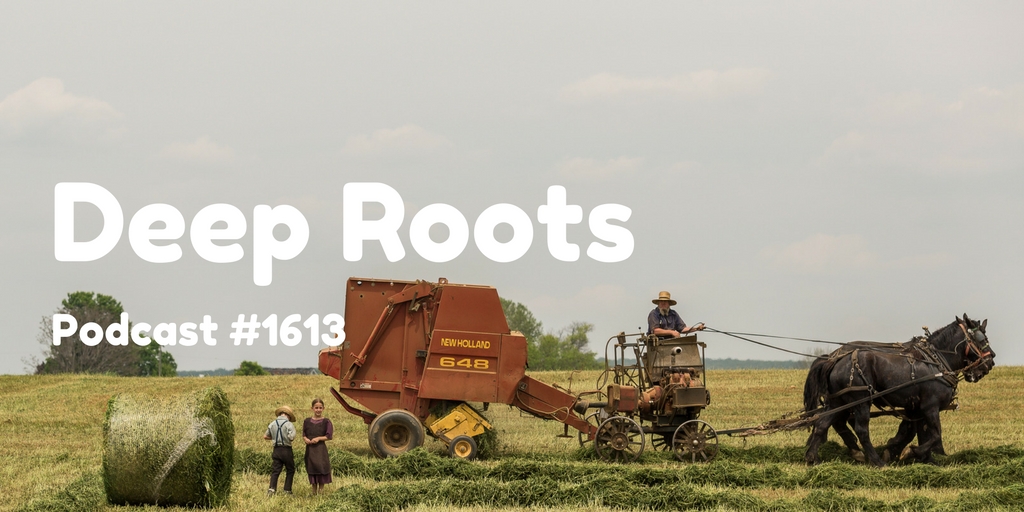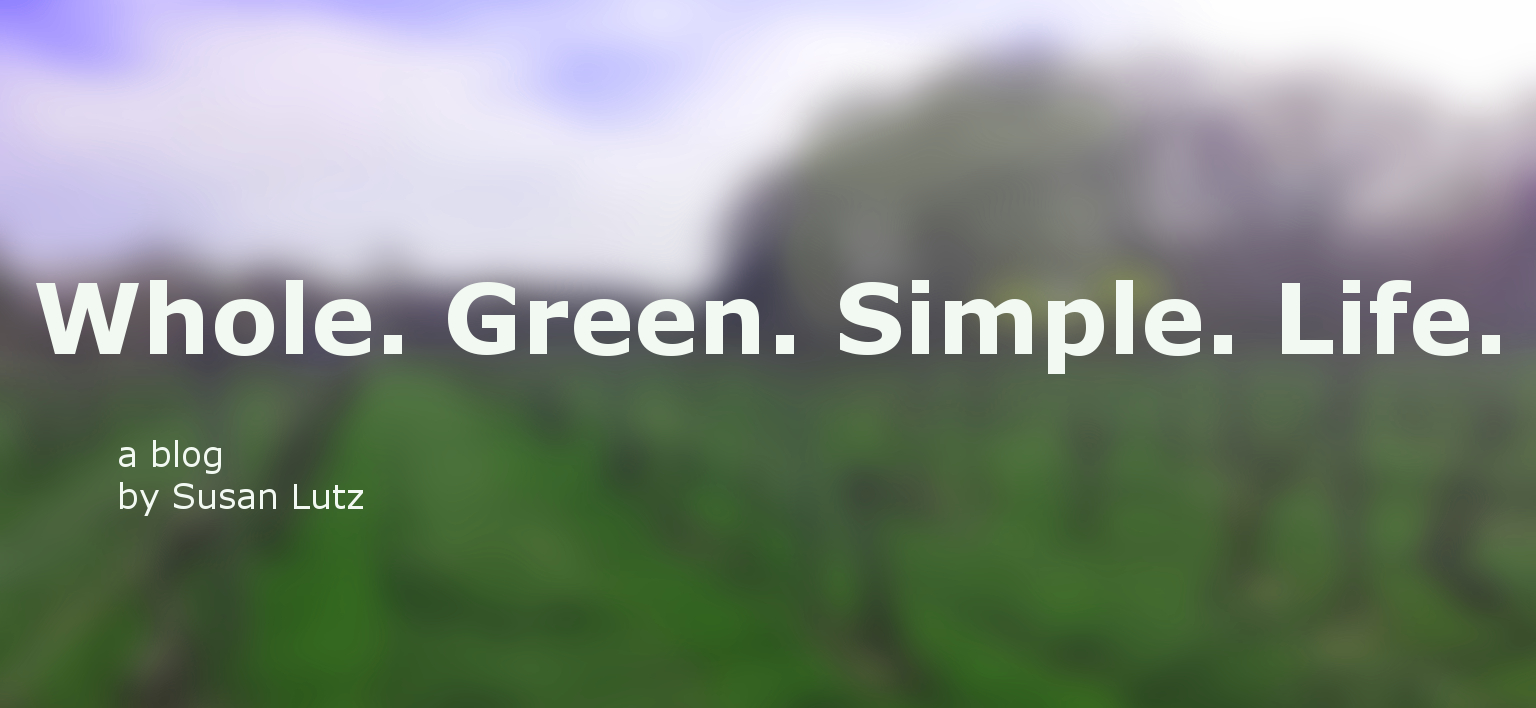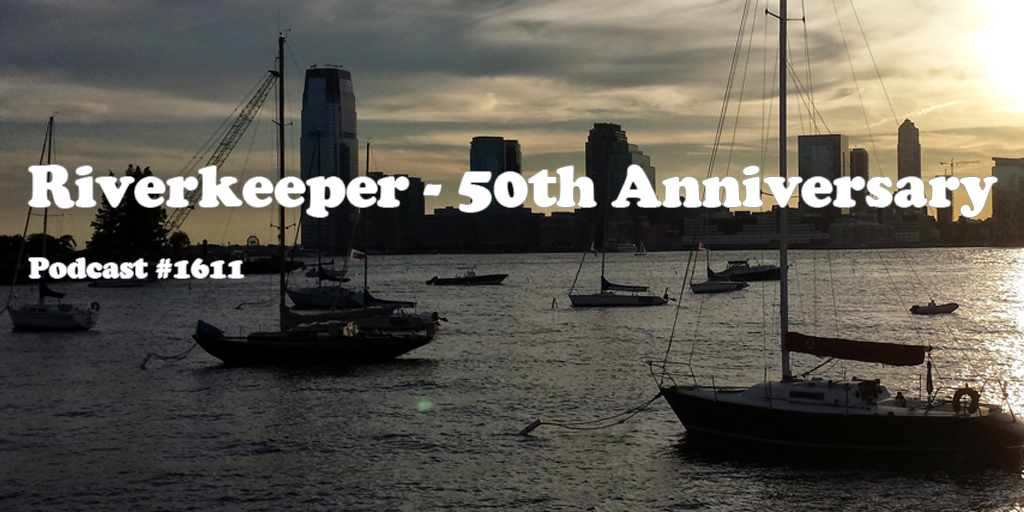This week’s episode of 50 Shades of Green Divas/The Many Shades of Green is our holiday special, and it features Joy Rose, founder of the Museum of Motherhood, the Mamapalooza Festival, the Moms Who Rock movement, and music from the band Housewives on Prozac. Green Diva Meg and I bring you holiday cheer, a tune from The Tokens, and some post election thoughts. We discuss the importance of raising one’s voice to be proactive, so that we can help mend the divisions within our nation. So have a Merry, Merry and a Happy 2017! For more info go to mommuseum.org, thetokens.com, thegreendivas.com and themanyshadesofgreen.com. Wishing everyone Peace, Love and Understanding……
Category: Environment
1621 Climate Monologues, Climate Change and Irthlingz
#1621 Climate Monologues, Stories of Climate Change and the plight of all Irthlingz
I caught up with Sharon Abreu after a performance of her one woman show, The Climate Monologues, at the United Solo Theatre in New York City. Sharon channels the voices of people affected by climate change, and brings their stories to life via monologues and music. Check out more by visiting:
climatemonologues.com, irthlingz.com and send Sharon a tweet @SharonAbreu
#1620 Rock and Wrap It Up
This episode of 50 Shades of Green Divas features Syd Mandelbaum, founder of Rock and Wrap it Up, an anti-poverty think tank, which works to feed those in need by taking unserved food from concert and sporting events, and delivering what is collected to local food charities. This not only helps feed those who go hungry, it minimizes waste in landfills, and thus reduces greenhouse gas emissions. The organization is also working to feed veterans and get needed supplies to women who cannot afford feminine products. For more information go to rockandwrapitup.org
#1619 Pipelines, Bomb Trains, Riverkeeper and Standing Rock
#1619 John Parker, DIrector of Legal Programs at Riverkeeper
Pipelines and Bomb trains are traveling along our waterways and land with reckless abandon. Our guest this week, John Parker, Director of Legal Programs at Riverkeeper (riverkeeper.org), gives us some insight into the issues, with respect to how those pipelines and the transportation of gas and oil are affecting our water, land and air. We also delve into the ongoing fight at Standing Rock in North Dakota, and how the pipelines in New York and North Dakota are interconnected. Kandi Mossett, organizer for the Indigenous Environmental Network, offers us some words on the current standoff. #NoDAPL nodaplsolidarity.org
Getting Fed Up
By Susan Lutz
Sometimes the hardest thing to do is watch. We know we should speak up. We know we should act. But, at times, we must let go and watch.
For years I’ve watched young people around me participate in life according to what others have told them. Advertisers cram sugar down kids’ throats; plastic toys fill up bins; we consume and consume and create chaos in our drive to satiate our desires.
I’ve worked to be a model for my kids in how I eat. I speak up about how the milk on the table is made and where the eggs in the carton come from. I show them videos about ecology, recycling, and humane treatment to animals. After awhile, I feel like the teacher in the comic strip, the Peanuts: bla bla bla – after awhile, my message thinned over the airwaves of our home. I knew some was getting in, but society pushes hard. I gave up on some issues, even warmed to a few I once staunchly disliked (i.e. Disney comes to mind).
As I watched my kids and friends’ kids grow, I’d learn of one becoming a vegetarian, another off to build a solar boat, and others blossoming in their awareness of the environment. When a young person’s mind turns on, it’s an amazing thing to stand witness too.
After a class of kids I know saw the documentary film, Fed Up, some were appalled at the treatment of our food system and as if awoken from their childhood world and were shocked at how corporations had a grip on what went into our food. Some I talked to truly empathized with people in the story, suffering from obesity or health issues all so companies could turn a buck.
The light bulbs didn’t just go on – the passion arose. I could see their minds ticking and their ire rise. Discovering the message the film was way more powerful than me just babbling on about it at the dinner table. I am sure the message will fade and settle over time but perhaps a few will let it truly sink in.
The hard truth is we have to go back into the grocery stores, feed our families, and ourselves drink our water, and breathe the polluted air. Cutting out sugar is a lot harder once we realize it is in almost everything we eat. Yet, the power in what they now know gives me the confidence to now watch as they take on these issues for a new generation. And, once they’ve grabbed on and owned it, we can join together and speak up with a louder voice than before.
1618 Kandi Mossett of Indigenous Rising Dakota Pipeline
Kandi Mossett of Indigenous Rising Dakota Pipeline
 Show #1618 A powerful conversation with Kandi Mossett, of Indigenous Rising, who is literally on the front lines of one of the current battles in the climate justice fight against the Dakota Access Pipeline. There are many reasons you need to listen to Kandi and learn more about what’s at stake.
Show #1618 A powerful conversation with Kandi Mossett, of Indigenous Rising, who is literally on the front lines of one of the current battles in the climate justice fight against the Dakota Access Pipeline. There are many reasons you need to listen to Kandi and learn more about what’s at stake.
#1617: Green Sex For Climate’s Sake
Green Sex for Climate’s Sake (Yes, Green Sex is a shade of green)
There is no single solution for climate change…but separating sex from childbearing represents an under appreciated opportunity to forestall climate disaster…for the climate, family planning’s potential benefits are profound.
Those are the words of my guest this week, Alisha Graves, who is the co-founder of the OASIS Initiative (a project of UC, Berkeley which focuses on reducing population growth and poverty in the Sahel region of Africa). Her recent article, “Green Sex for Climate’s Sake,” debates the link between carbon emissions and population, and the need to educate young women, as well as young men, about contraception, family planning and health. For more information go to: oasisinititative.berkeley.edu and projectdrawdown.org.
[soundcloud url=”https://api.soundcloud.com/tracks/282756262″ params=”color=ff5500&auto_play=false&hide_related=false&show_comments=true&show_user=true&show_reposts=false” width=”100%” height=”166″ iframe=”true” /]
#1616: Anti-Poaching Game Changers
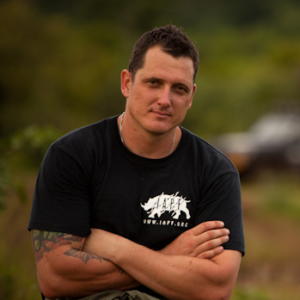 “Green” eco-warriors are working to protect rhinos and elephants, which are on the verge of extinction, as they are killed by poachers for their horns and tusks. My guest this week, Damien Mander, founder of the International Anti-Poaching Foundation, is working to train rangers in the preserves of Africa, via legal and direct tactics, to bring poachers to justice. He is a vegan and believes that animals suffer tremendously when they are raised for consumption, which is also a major contributor to climate change. Damien is starring in a James Cameron film called “The Game Changers”, which you can check out by going to gamechangers.com. For more information on the work of the International Anti-Poaching Foundation, go to iapf.org
“Green” eco-warriors are working to protect rhinos and elephants, which are on the verge of extinction, as they are killed by poachers for their horns and tusks. My guest this week, Damien Mander, founder of the International Anti-Poaching Foundation, is working to train rangers in the preserves of Africa, via legal and direct tactics, to bring poachers to justice. He is a vegan and believes that animals suffer tremendously when they are raised for consumption, which is also a major contributor to climate change. Damien is starring in a James Cameron film called “The Game Changers”, which you can check out by going to gamechangers.com. For more information on the work of the International Anti-Poaching Foundation, go to iapf.org
[soundcloud url=”https://api.soundcloud.com/tracks/282472207″ params=”color=ff5500&auto_play=false&hide_related=false&show_comments=true&show_user=true&show_reposts=false” width=”100%” height=”166″ iframe=”true” /]
1614: Accelerating Appalachia
 My guest this week is Sara Day Evans, Founder of Accelerating Appalachia, which provides social and economic assistance to nature based and local businesses in the vast region of Appalachia, which spans 12 states and has a population of 25 million people. It is one of the most bio-diverse regions on the globe, and new businesses that are based on food, farming and forests are providing jobs and promoting sustainability. Nature Based Businesses (NBB’s) are part of a movement to protect the earth, and maintain the beauty of the Appalachian region. To quote Ms. Evans “My advice to someone thinking of starting an accelerator or a business is this: Be resilient, stubborn, and focused, and love what you do.” For more info go to acceleratingappalachia.org
My guest this week is Sara Day Evans, Founder of Accelerating Appalachia, which provides social and economic assistance to nature based and local businesses in the vast region of Appalachia, which spans 12 states and has a population of 25 million people. It is one of the most bio-diverse regions on the globe, and new businesses that are based on food, farming and forests are providing jobs and promoting sustainability. Nature Based Businesses (NBB’s) are part of a movement to protect the earth, and maintain the beauty of the Appalachian region. To quote Ms. Evans “My advice to someone thinking of starting an accelerator or a business is this: Be resilient, stubborn, and focused, and love what you do.” For more info go to acceleratingappalachia.org
[soundcloud url=”https://api.soundcloud.com/tracks/277704547″ params=”color=ff5500&auto_play=false&hide_related=false&show_comments=true&show_user=true&show_reposts=false” width=”100%” height=”166″ iframe=”true” /]
Deep Roots
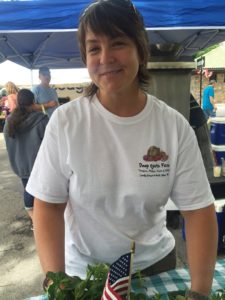 What do organic tomatoes, horn worms and Olympic figure skating legend Dick Buttons have in common? To find out, tune into this week’s show, as Allison Turcan, Stormie Velarde-Hamill and Scott O’Rourke of Deep Roots and DIG Farms, discuss what it takes to run a suburban farm. Learn about WOOFING, and no it doesn’t involve dogs howling, as well as what the difference is between organic and certified organic products. We chat about creepy, crawly and utterly gross worms which attack tomatoes and turns them truly rotten. Local farms supply the booming green markets in the NY metro tri-state area, and Scott, Allison and Stormie are not only growing amazing produce, they are working with kids, via food literacy programs, to educate them about growing delicious and healthy food. For more info go to facebook.com/DIGFarm
What do organic tomatoes, horn worms and Olympic figure skating legend Dick Buttons have in common? To find out, tune into this week’s show, as Allison Turcan, Stormie Velarde-Hamill and Scott O’Rourke of Deep Roots and DIG Farms, discuss what it takes to run a suburban farm. Learn about WOOFING, and no it doesn’t involve dogs howling, as well as what the difference is between organic and certified organic products. We chat about creepy, crawly and utterly gross worms which attack tomatoes and turns them truly rotten. Local farms supply the booming green markets in the NY metro tri-state area, and Scott, Allison and Stormie are not only growing amazing produce, they are working with kids, via food literacy programs, to educate them about growing delicious and healthy food. For more info go to facebook.com/DIGFarm
[soundcloud url=”https://api.soundcloud.com/tracks/277370184″ params=”color=ff5500&auto_play=false&hide_related=false&show_comments=true&show_user=true&show_reposts=false” width=”100%” height=”166″ iframe=”true” /]
Get the Lead Out
By Susan Lutz
Tests came back from our school’s water samples. The results indicated elevated levels of lead and copper in faucets throughout the system. Drinking fountains were shut off; signs posted. Our school initiated testing, something they did voluntarily. Many samples were “first draws,” from the water sitting in the faucets during the night. Fixing water supplies is a difficult and expensive task. I threw extra water bottles for my son into his backpack. He’d been in some of the rooms that tested positive. Water fountains are located right in many of the rooms. He loves drinking fountains. I’ve watched kids saunter up to fountains after a good romp on the playground. They are empowered, quenching their thirst on their terms and rewarding their body and mind for a job well done. Clear and cold, the water tasted great and at the same time, full of toxins.
Flint, Michigan. Once the words meant simple a town, now they spell a disaster. Many schools around the country report problems with their water supply. Old buildings mean aging pipes. Schools struggle with budgets to keep up everything from teachers to infrastructure. The story in Flint raised a flag of the dangers in our waters supply across the country.
I’ve always worried about toxins in water. When I lived in Central America, water was checked for the levels of cockroach droppings in it. Chlorine was a regular addition to many water supplies. I tried keeping up with buying bottled water, but news reports showed even that supply was tainted, and, the price kept going up. Bottled water adds yet another dimension to the environmental impact that fills the land with plastic. Many of the brands of bottled water are not better than the water from the tap and the cost can be 2000 times more than tap water. Yet, now what? Does bottled water now return as our water source? What do we do?
My son runs to a water fountain with such glee. The water flies out, and he takes a sip. I can’t always stop him. Even in school, signs are posted to not drink out of certain fountains. My child can’t read those yet. At the library, the shopping center, or any other public places, water now makes me worry. We make messes that become so hard to clean up. From the little plastic, disposable coffee K-cup, to the use of plastic bags, to glow-in-the dark plastic wands, I have a choice to consume these or not. Though not always easy to avoid, I feel maybe I have a fighting chance. With water, however, we as a nation must deal with it. We start with schools, and then we must move on to open our eyes and not ignore the problem that most likely is flowing everywhere we drink.
John Parker – Riverkeeper
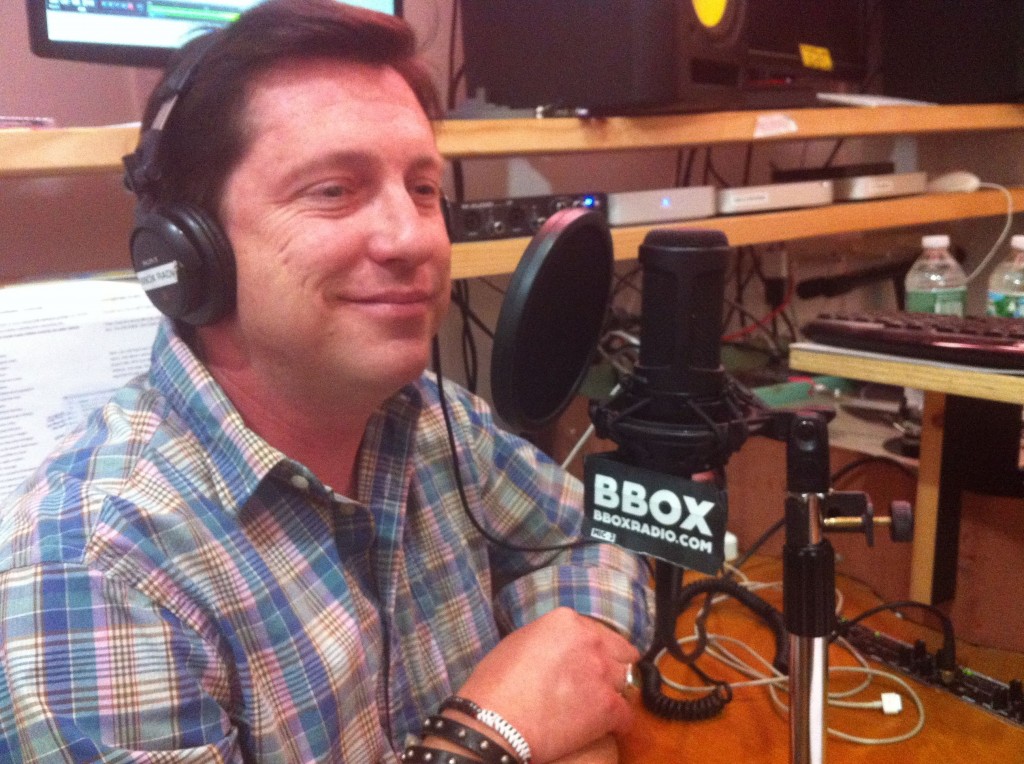 Riverkeeper, the guardian of the water, land and air celebrates its 50th Anniversary this year, and it is fitting to have friend of the show, John Parker, Director of Legal Programs at Riverkeeper, as my guest this week. We discuss all the great work Riverkeeper has done over these last five decades, as well as what they will continue to do to preserve and protect the environment. Keeping the waterways vibrant, and our drinking water clean, is essential to the health and well being of the citizens in New York State and beyond. To find out more about this great organization, go to Riverkeeper.org.
Riverkeeper, the guardian of the water, land and air celebrates its 50th Anniversary this year, and it is fitting to have friend of the show, John Parker, Director of Legal Programs at Riverkeeper, as my guest this week. We discuss all the great work Riverkeeper has done over these last five decades, as well as what they will continue to do to preserve and protect the environment. Keeping the waterways vibrant, and our drinking water clean, is essential to the health and well being of the citizens in New York State and beyond. To find out more about this great organization, go to Riverkeeper.org.
[soundcloud url=”https://api.soundcloud.com/tracks/262496403″ params=”color=ff5500&auto_play=false&hide_related=false&show_comments=true&show_user=true&show_reposts=false” width=”100%” height=”166″ iframe=”true” /]
